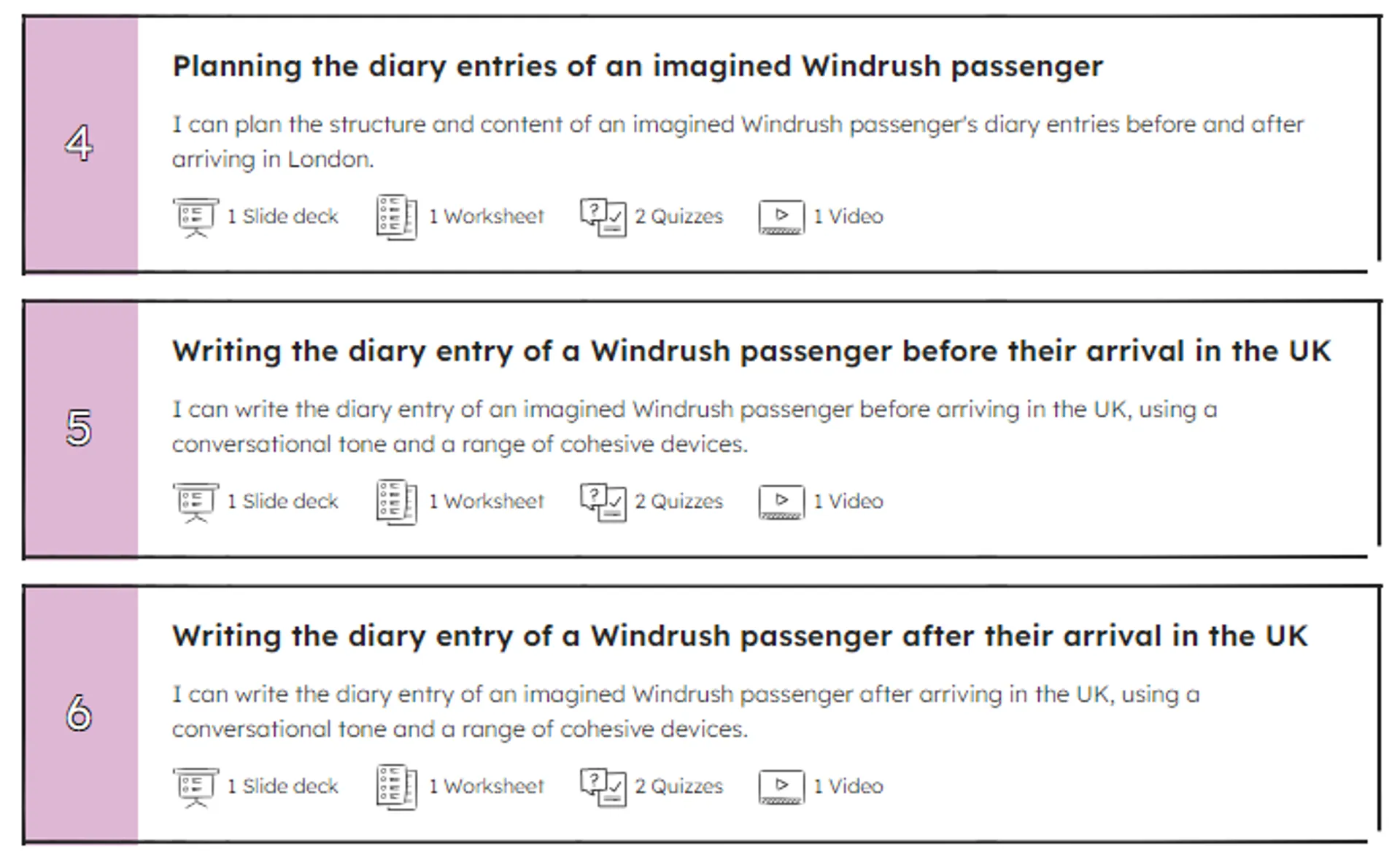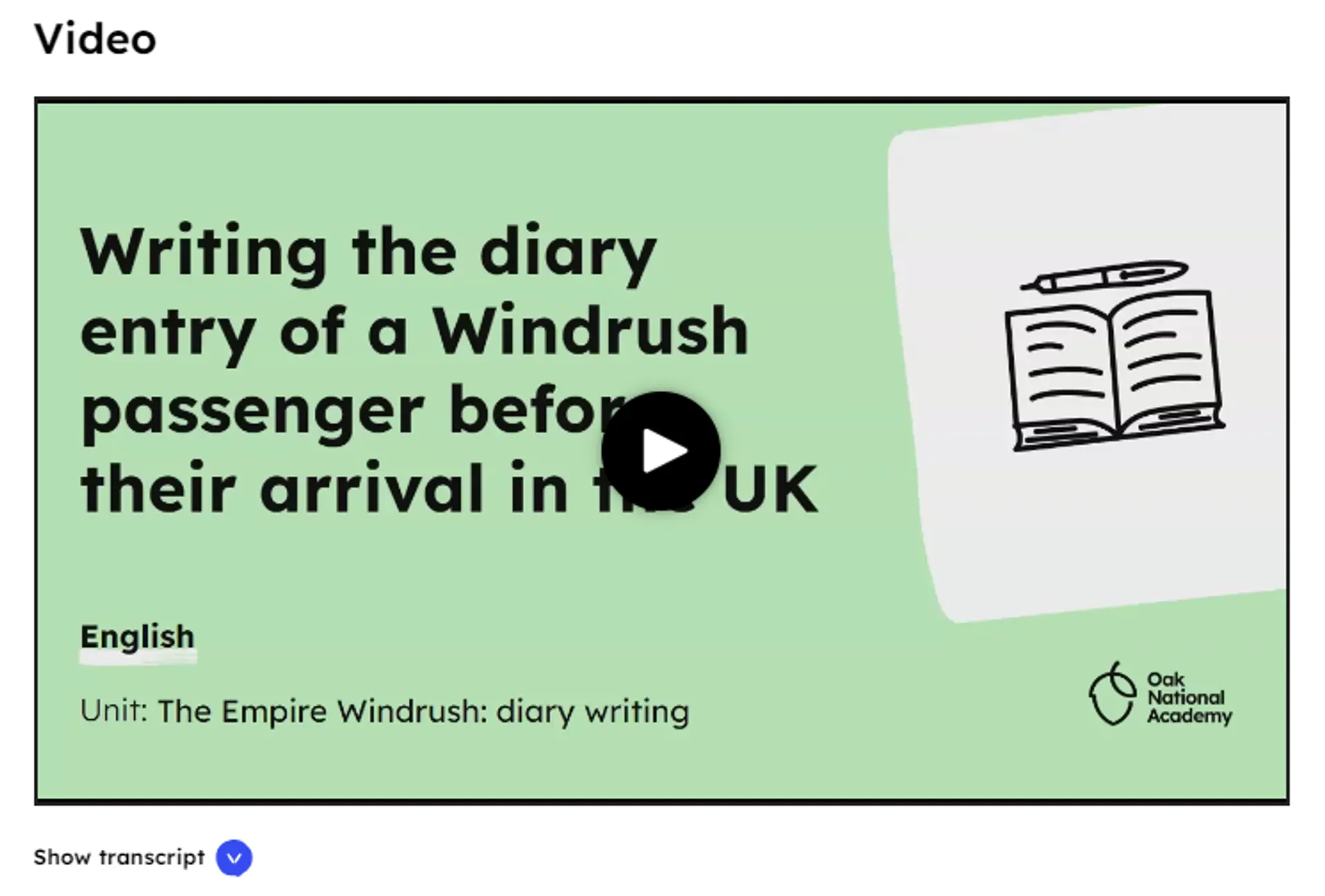
Categories
Lesson planning
16 April 2024How to plan a lesson: simple steps

Melanie McGhee
School Support Officer
Are you looking for advice on planning a lesson? Need some simple steps to follow so that you can have the highest impact in the classroom, regardless of the subject you teach?
If you’re lesson planning for the first time or tackling topics you’re less familiar with, there are probably lots of questions running through your head.
Everyone will approach the task in their own way, but there are some strategies and simple steps you can use to navigate the lesson planning process and save time doing it.
By the time you reach the end of this blog, we hope to have helped you work through some of those questions and provided helpful modelled lesson planning examples, so you feel ready to plan a lesson.
What to consider when lesson planning
When considering lesson planning, there is no one-size-fits-all approach, not if you factor in subject knowledge, class dynamics, starting points, and school-expected lesson plan templates.
There are a number of questions to consider when you plan your lesson:
- What is my school’s lesson planning policy and format?
- How confident are my class in this topic?
- How long is my lesson for?
- What is the starting point for my pupils?
- What support do I have available?
- How much do I know about this topic?
How to plan a lesson: simple steps
You should know where the lesson fits within the curriculum plans, subject curriculum, unit of study, and any available cross-curricular links. Knowing where your lesson fits in the bigger picture is essential when making it purposeful.
You might want to consider planning lessons in batches to create a unit of study that’s coherent and purposeful for your pupils, as part of the wider subject curriculum.
Decide the learning outcomes
For this, we mean the learning objective you will focus on: what you want pupils to know and understand by the end of the lesson, including the vocabulary you’d like them to explore and use and how you will know if they have achieved the desired outcomes. It is important to note the outcomes may vary for individuals and groups based on need.
Get confident with the lesson content
You are unlikely to be a specialist in every subject or topic you teach, but there are lots of ways you can boost your confidence with teacher subject knowledge. For example, you could watch our expert-led videos, which cover all national curriculum subjects, to see how an experienced teacher would approach teaching different vocabulary and concepts.
Break the lesson up into timings
When deciding the timings of your lesson, factor in the aspects of school life that may impact your lesson delivery. For example, if you teach a year 1 class after lunchtime on a Friday, it can be useful to factor in their energy levels when planning practice tasks.
You may have some classes that would benefit from you teaching the lesson over two periods, whereas another class might require less scaffolding and time spent on the lesson content. These are all important factors to consider when you set about planning a lesson.
Find lesson resources
Once you know the outcomes and where these objectives sit in relation to the pupils’ bigger learning picture, it’s time to start thinking about what you need to teach the lesson.
There’s no need to start from scratch with this. Instead, you could look for high-quality teaching resources that you can use as a starting point. Spend your valuable time adapting them to suit the needs of your pupils and making sure they’re pitched appropriately.
Avoid falling into the trap of trying to find an ‘engaging’ resource that offers little depth and application of a knowledge-rich curriculum. Make sure your planning is outcome-focused and instead, look for resources that will support your pupils’ learning and are easily accessible by all.
How to plan a lesson: in practice
It’s always helpful to see the five steps to lesson planning applied. Here, we’ve imagined you’re a teacher using resources from our primary English curriculum to plan a lesson.
Example lesson plan template
For this example, we’re imagining you’re planning a lesson for KS2 lesson about writing a diary for a Windrush passenger before their arrival to the UK.
- Know where it fits: If you look at our KS2 English unit on diary writing through learning about the Empire Windrush, you can see how this particular lesson might fit in a wider sequence of lessons.
This is the beginning of a 6-part diary-writing unit. You can see that we've designed the unit so that you have the resources to plan a lesson that first introduces pupils to the history of the Empire Windrush, before exploring how to write accounts from the passenger's perspectives about different parts of the journey.

- Know the outcomes: Knowing what you want pupils to learn before planning the lesson means you have a clear goal to work towards. To avoid just finding activities that aren't outcome-led around the topic of diary writing, you must decide the learning outcome.
When you visit the lesson overview page, you’ll see a range of information that can help you quickly understand the learning outcome we’ve designed our resources around and how you can plan with them.
The outcome of this lesson is: I can write the diary entry of an imagined Windrush passenger before arriving in the UK, using a conversational tone and a range of cohesive devices.
- Get content confident: You may not be an English specialist, and that’s okay! Boost your subject knowledge by watching the video of an experienced teacher delivering the lesson. To speed things up, you can adjust the speed and skim through the transcripts to help give you inspiration for how you’ll teach your own version of the lesson.
- Break up the lesson: You know your children best (or if this is an interview lesson, think about the age of children, length of lesson and time of day when deciding timings).
When designing our slide decks and other teaching resources, we choose to ‘chunk’ learning into cycles. These cycles teach a key concept or idea linked to the key learning points.
The cycles are formed of two phases: explanation, interspersed with checks for understanding; and practice, with accompanying feedback. This approach could work for you and your pupils. - Find lesson resources: To reduce the pupil's cognitive demands, you will want adaptable, good-quality and well-organised resources.
You might just need a handful of slides from one of our decks, or the whole thing. You might be looking for a worksheet to refresh a lesson you’ve been teaching for a long time. Download as much or as little as you need. They’re yours to use however you want.
How we can help
Whether you're looking to design a unit of study or plan a lesson for any subject in the national curriculum, we offer access to countless lesson-planning resources, expert-led videos and free teaching materials.
Our aim is to ensure you are fully equipped to teach inspiring and accessible lessons to your pupils and reduce the workload behind quality lesson planning.
Want to discover just how we can help? Get started by checking out our curriculum page, choose a subject and key stage of your choice and get browsing.
Key takeaways:
- Consider your school's expectations around lessons - what approach and format is expected in your setting?
- Start with the outcomes - what do you want pupils to know by the end of your lesson, and how does this fit into the wider curriculum plans?
- You don't need to reinvent the wheel! Use a high-quality starting point as a foundation for your planning and save time.
You might also be interested in:
- How to plan a lesson: a helpful guide
- How to design a subject curriculum
- How long does it take to plan a lesson?
- What are learning objectives?
- Tips to help you plan a lesson
Sign up for email updates
Sign up below to be kept updated on our latest curriculum developments and other helpful content by email. Unsubscribe at any time. Read our privacy policy.



